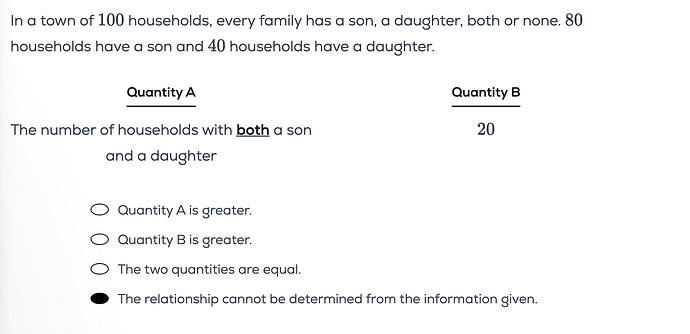I watched Greg’s explanation and understand how he arrived to D, but I think the wording could be a bit clearer here? That or I am missing a key factor in how these problems can be worded. I arrived at B following the logic below.
Since the question states " every family has a son, a daughter, both, or none", shouldn’t we assume that the value of “both” and “none” is greater than zero? One of the examples Greg used to arrive at D inserts 0 for None but I assumed N > 0, which led me down the path below:
100 = 80 + 40 - Both + None
100 = 120 - B + N
-20 = -B + N
B = 20 + N
If N is greater than zero and B is greater than zero, and they’re both integers since we’re talking about humans (ie. cannot have a fraction of a human), then the least value of N is 1, in which case the greatest value of B is 19.
What am I missing? Is it simply because I took the “has… both or none” too literally?
